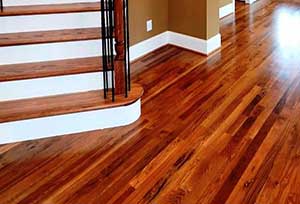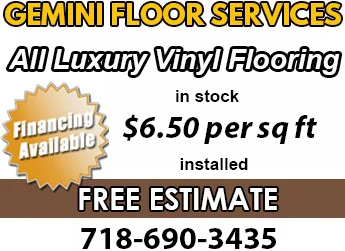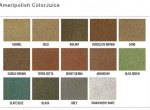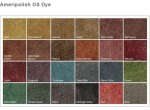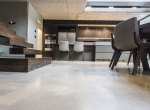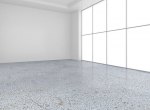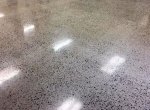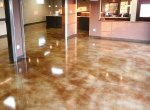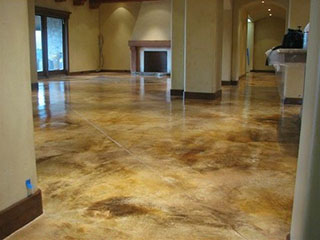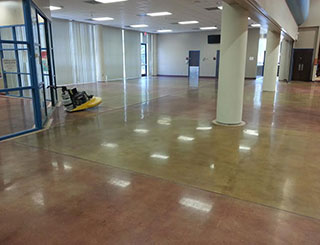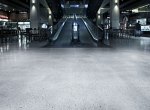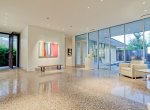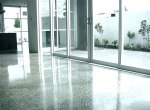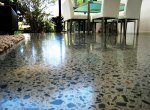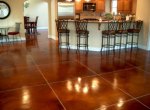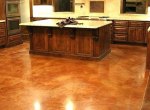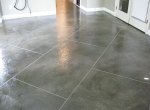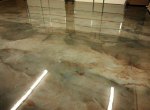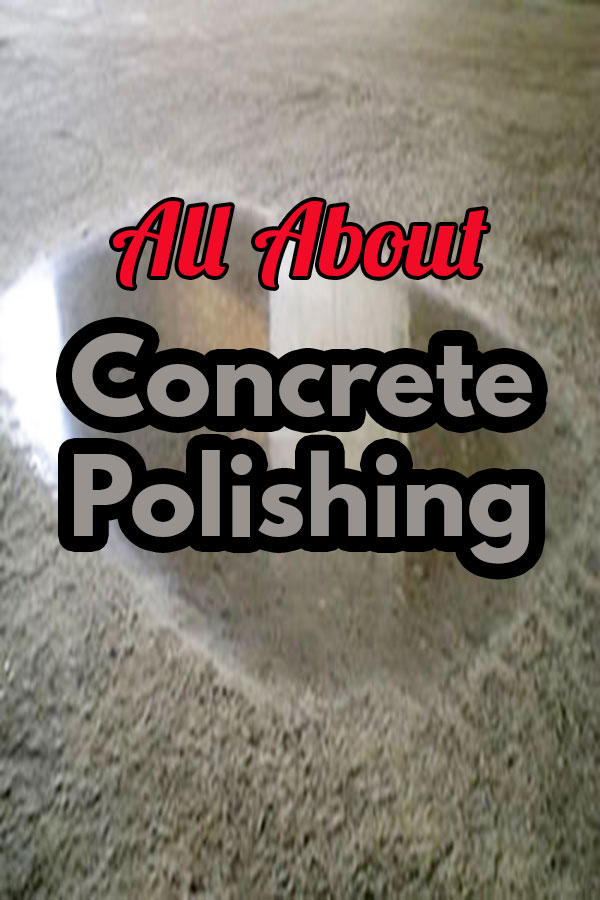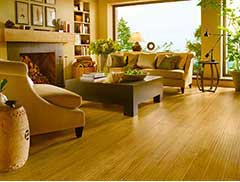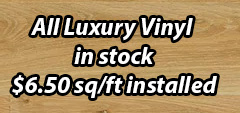 Gemini Floor Services offers concrete polishing & staining for commercial, industrial & residential floors in New York City. Recent developments in concrete grinding & polishing equipment & design choices have brought polished concrete to the forefront of flooring options. Today with diamond polishing technology plain concrete surfaces can be designed & polished to a mirror like finish. Though it was once found mostly in commercial & industrial settings, since the turn of the century homeowners are also opting for polished concrete flooring as they discover the cost savings, benefits & design possibilities.
Gemini Floor Services offers concrete polishing & staining for commercial, industrial & residential floors in New York City. Recent developments in concrete grinding & polishing equipment & design choices have brought polished concrete to the forefront of flooring options. Today with diamond polishing technology plain concrete surfaces can be designed & polished to a mirror like finish. Though it was once found mostly in commercial & industrial settings, since the turn of the century homeowners are also opting for polished concrete flooring as they discover the cost savings, benefits & design possibilities.
Eco friendly polished concrete floors offer numerous benefits making it an ideal choice for most homes or business areas with existing concrete. There is no need to add additional flooring materials. A polishing machine and skilled craftsmen can transform the concrete into a beautiful, low maintenance floor that can last a lifetime. The multi step polishing process involves hardening & densifying the concrete. The result is a practically permanent floor that will never need replacing.
Polished concrete offers a virtually unlimited design pallette. It can be stained or dyed various colors & patterns. Decorative lines can be etched on the surface. Polished concrete can replicate the look & performance of stone, marble & tile while being more cost effective.
Our Polished Concrete Services
There are several types of services available for concrete floors:
- Concrete polishing – concrete is mechanically ground, polished & hardened with a densifier product.
- Concrete grinding – prepares concrete floor for installation of any other flooring material by leveling the floor & removing any existing surface coatings such as mortar, grout, thinset, glue, paint & epoxy.
- Concrete design – coloring concrete with stains & dyes, adding decorative etching & cuts on the surface.
- Grind & seal – a less expensive & popular method of polishing concrete. It involves less mechanical grinding & the polish is achieved by applying a topical sealer. It is not permanent like mechanically polished concrete & requires periodic resealing.
- Maintenance buffing – occasional (like semi annually) buffing with a hair pad to maximize the shine of polished concrete.
- Epoxy coatings (aka concrete overlays & micro toppings) – highly durable & decorative coatings that can be applied to level & reinforce pitted or cracked concrete slabs. Design options include a multitude of colors, patterns & imprints which can include borders, stencils & logos. They are an alternative to polished concrete & are often applied to concrete slabs which are too worn or damaged to be polished (otherwise mostly any old or new concrete floor can be polished).
Mechanical Concrete Polishing Process
 Concrete grinding is the first step in preparing a concrete floor for polishing. A heavy duty grinding/polishing machine with diamond pads is used. We use the dry polishing method in which all the ground dust is vacuumed into the polishing machine. The other method of wet polishing uses water to eliminate dust & protect the grinding pads. This method produces a great amount of slurry that must be cleaned up. There is alot more labor involved & the issue of how to dispose of the waste. The dry method is most common with today’s modern equipment making the process faster & more eco friendly. Resin bonded discs allow the entire process to be done dry.
Concrete grinding is the first step in preparing a concrete floor for polishing. A heavy duty grinding/polishing machine with diamond pads is used. We use the dry polishing method in which all the ground dust is vacuumed into the polishing machine. The other method of wet polishing uses water to eliminate dust & protect the grinding pads. This method produces a great amount of slurry that must be cleaned up. There is alot more labor involved & the issue of how to dispose of the waste. The dry method is most common with today’s modern equipment making the process faster & more eco friendly. Resin bonded discs allow the entire process to be done dry.
To begin, decontaminating products are used to remove grease & stains. Joints & cracks are sealed with epoxy filler. Then pits, blemishes & floor coatings like glue or thinset are removed by grinding. The concrete is then ground & polished in multiple steps from coarse to finer and finer grit until it has a smooth reflective sheen. Depending on how many times it’s polished the selected finish/sheen level can be flat, satin, semi gloss or high gloss.
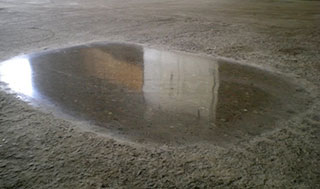 Penetrating concrete densifier products (aka protectors, sealers) are applied to the surface at several stages of the process. The densifiers chemically react with the concrete to harden & strengthen the floor while assisting with the polishing process. The mechanical polishing with the densifier seals the surface, prevents dusting & protects it from moisture & stains.
Penetrating concrete densifier products (aka protectors, sealers) are applied to the surface at several stages of the process. The densifiers chemically react with the concrete to harden & strengthen the floor while assisting with the polishing process. The mechanical polishing with the densifier seals the surface, prevents dusting & protects it from moisture & stains.
Polished Concrete Topical Treatment Options
Polished concrete never needs waxing, however there are a few options for topical treatments, though they are not always necessary. Polishing compound is optional & may be applied to further enhance the shine. Stain guard is an additional option for surfaces that may regularly come in contact with harsh chemicals. Sealer is also optional for locking in color on dyed floors. Colored dyes & stains may be applied at different stages of the process. Decorative lines & markings etched onto the surface are another option. Lastly, the floor is buffed with soft pads to achieve the final finish. The floor is then ready for traffic.
* Note that if a concrete floor was tiled, even though it is ground & polished grout lines may remain visible.
Grind & Seal / Topically Polished Concrete
 As mentioned, there’s two methods of polishing concrete. The second method is called topically polished concrete or a grind & seal concrete floor. It is also a common method because it is less expensive and quicker. It does however require some more maintenance than mechanically polished concrete. The polish is achieved by applying a topical sealer on the surface rather than by many passes with the grinding/polishing machine. The topical sealer will periodically need resealing.
As mentioned, there’s two methods of polishing concrete. The second method is called topically polished concrete or a grind & seal concrete floor. It is also a common method because it is less expensive and quicker. It does however require some more maintenance than mechanically polished concrete. The polish is achieved by applying a topical sealer on the surface rather than by many passes with the grinding/polishing machine. The topical sealer will periodically need resealing.
There’s two methods of topically polished concrete. One method is for concrete which is new or in very good condition. The concrete is simply acid washed, colored with water based stain or dye, then sealed with water based or solvent based sealer. The second method involves also grinding the floor 2-3 times to clean it, smooth it, remove blemishes & achieve the desired level of aggregate exposure . Cracks or pits are filled with epoxy before grinding. Once the prep work is completed the same steps are applied – coloring with stain or dye & sealing.
*Note that new concrete should not be polished or sealed for at least 30-60 days to ensure that the concrete is fully cured and moisture is not trapped under the surface. We test new floors with a moisture meter before beginning.
Polished Concrete Floor Finishes & Design Options
1. Polish GRADE – the aggregate (rock) exposure level: Depending on how heavily the surface is ground varying degrees of aggregate can be exposed, each level having it’s own design characteristics.
GRADE 1 (CREAM) – The most polular grade for commercial & industrial, requires the least amount of grinding & results in a creamy look by only exposing fine sand particles at the surface.
GRADE 2 (FINE/SALT & PEPPER) – concrete is ground 1/16″ exposing sand & fine rock particles resulting in a salt & pepper look.
GRADE 3 (MEDIUM) – concrete is ground 1/8″ exposing small to mid size aggregate.
GRADE 4 (LARGE) – concrete is ground 1/4″ exposing large aggregate, comparable to the look of terrazo.
2. Color – Choose from muliple colors of dyes & stains or go with no added color for an industrial look. You can apply solid colors or use multiple colors to create patterns & marbled designs which replicate stone & marble.
Ameripolish Color Charts New Look Color Charts
3. Finish – the sheen level: choose how shiny & reflective the surface is. This depends on how many times the surfaced is polished with progressively finer diamond grit.
CLASS 1 – (FLAT/MATTE) 100 grit finish, little to no reflectivity, minimum 4 abrasive passes
CLASS 2 – (SATIN) 200-400 grit finish, low gloss & reflectivity, minimum 5 abrasive passes
CLASS 3 – (SEMI GLOSS) 800 grit finish, medium gloss & reflectivity, minimum 6 abrasive passes
CLASS 4 – (HIGH GLOSS) 1500 grit finish, high gloss & mirror like reflectivity, minimum 7 abrasive passes
4. Decorative cuts – lines can be cut into the surface to add even more design features which can give a look that replicates tile & stone. Note that on new concrete floors (during concrete laying) & epoxy coated concrete the surface can be stamped & etched with decorative patterns & designs, logos, etc.
Concrete Stains & Dyes
 Stains & dyes are transparent colors that enhance the concrete while allowing the aggregate & reflective surface to show through. With concrete stains, dyes or combinations of both there are virtually unlimited colors & designs that can be achieved. Replication of stone, marble or wood is even possible on polished concrete, concrete overlays or new concrete surfaces using the techiques of faux finishing & pattern stamping.
Stains & dyes are transparent colors that enhance the concrete while allowing the aggregate & reflective surface to show through. With concrete stains, dyes or combinations of both there are virtually unlimited colors & designs that can be achieved. Replication of stone, marble or wood is even possible on polished concrete, concrete overlays or new concrete surfaces using the techiques of faux finishing & pattern stamping.
Concrete Stains
Concrete stains are acid based & when applied they etch the surface by creating a chemical reaction with the lime in concrete. Unlike dyes, stains are available in limited colors, mainly earth tones. Stains create a varied look, a mottled effect and are often used for a natural decor & to replicate stone & marble. As stains create variable coloring rather than a solid uniform color, the result is somewhat unpredictable, also because the final color may change after it reacts with the concrete for some hours.
Application of stains is generally more time consuming. Stains require a multi step application with minimum 5 hours of dry time between coats. If a sealer is being applied the surface must also be first neutralized & washed with a water based solution. Application of stains also requires gear to protect against the corrosive acid. The main benefit with stains is they are highly UV resistant & the result is more permanent & fade resistant than concrete dyes.
Concrete Dyes
Concrete dyes are generally easier to work with than stains and dry much quicker. They penetrate into the concrete surface rather than create a chemical reaction. Thus the results are more predictable. And they’re available in a broad spectrum of colors. These features mean greater possibilities for creativity & intricate patterns. Solvent based dyes create more solid, bold & uniform colors, while water based dyes create lighter pastel colors with a varied, marbled effect similar to stains. Similar based dyes can also be combined to create multi color marbled effects or blended to achieve any desired color.
Water based dyes are eco friendly, low in VOC’s with no chemicals & are easy & safe to work with. Solvent based dyes have chemicals, are highly flammable & really should be handled only by professionals. Unlike stains most dyes are not UV stable, so they will fade in the sun and thus are intended for indoor use only. A clear sealer can be used to lock in the color for longer. Floors can later be redyed or color changed if desired.
Concrete Stain & Dye Color Samples
Manufacturers of concrete stains & dyes like Ameripolish inform you that their color charts are a general guide for selecting a color. The final color can vary once it is applied because concrete slabs can vary in makeup properties, grade & finish. Also looking at colors online will vary due to photography & monitor settings. It is advised to see an actual job site sample when selecting a color. We can arrange during the process for you to see job site samples to know exactly what you’re getting.
Benefits of Polished Concrete
- Many design options (grade level, finish level, colors, patterns, engraving)
- Can replicate stone & marble at a lower cost
- Cost effective:
- Great value & affordability-can cost less up front & to maintain than other types of flooring
- Cost efficient & sustainable-makes use of existing floor material without adding additional materials
- Lower cost over life of floor compared to other types of flooring
- A great alternative to all types of flooring
- Highly reflective, can brighten the area & reduce lighting requirements
- Can be completed with less downtime than other types of flooring, space can be occupied immediately after work is complete
- Low Maintenance:
- Never needs replacing
- Never needs waxing (sealers or other types of coatings are optional)
- Only required maintenance is a weekly sweep & damp wiping, semi annual hair pad buffing to maximize shine (if floor is regularly exposed to harsh chemicals you may apply stain guard every 6-12 months)
- A seamless finish that won’t hide dust, dirt, & allergens
- Hypoallergenic, resists mold, mildew & bacteria
- Highly Durable:
- Lasts a lifetime
- Stands up to high foot traffic, heavy equipment, tire wear, high impacts & loads
- Extreme abrasion resistance
- Repels moisture & resists stains from water, oil & chemicals
- Efficient & Eco Friendly:
- No toxic emissions
- Non-slip, not slippier than normal concrete when kept clean and dry. Can be less slippery than tile or marble. Anti slip additives can be added during routine cleaning to add additional traction if desired.
- Same acoustic qualities as wood, stone and tile
Where To Use Polished Concrete Flooring
Any area with a concrete slab can have either polished concrete or epoxy coated concrete flooring. This applies to any residential, commercial or industrial, public or private area: garages, warehouses, manufacturing plants, retail areas, hotels, restaurants, hospitals, offices, showrooms, clubs, museums, etc.
Polished Concrete Cost
The cost for concrete polishing will vary depending on several factors like size & complexity of project, prep work & design options. Generally commercial spaces run $3-$12 per square foot, while residential areas are $6-$12 per square foot. Residential polished concrete floors are generally higher cost due to less square footage & becuase smaller areas are more difficult to work in & require specialty equipment. Overall, the polished concrete price is usually around 1/2 to 1/3 the cost of installing tile or hardwood flooring.
Is Polished Concrete a Do It Yourself Project ?
Concrete polishing & staining requires expensive equipment & expertise that makes it a job much better left for professional concrete polishing contractors. Gemini Floor Services is a concrete polishing company serving Brooklyn & the New York city metro area. Call to schedule a free estimate. 718-690-3435
More pictures of polished concrete
